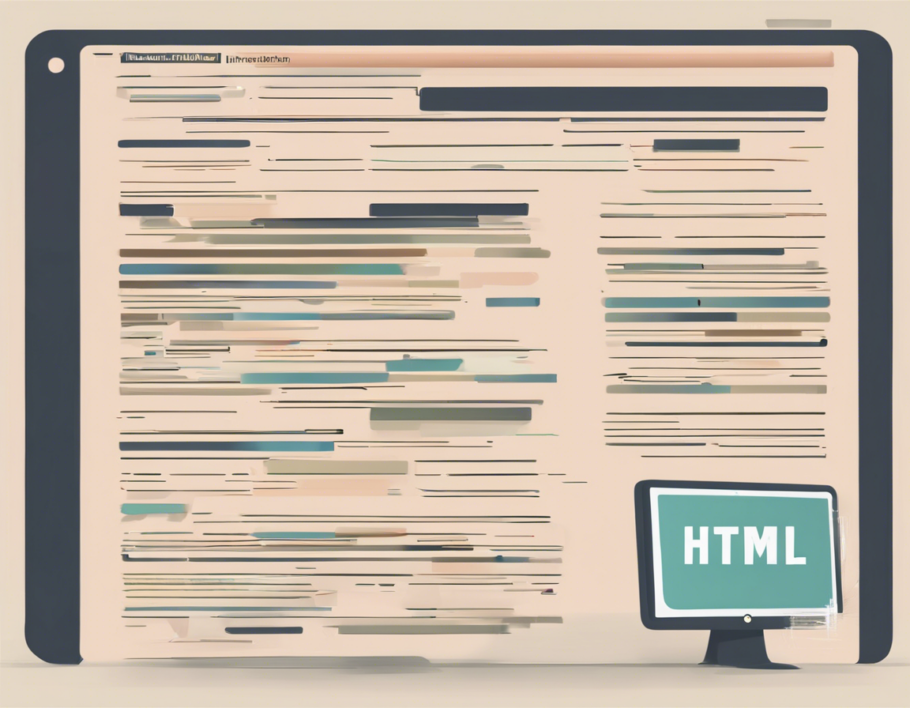What is HTML?
HTML, which stands for Hypertext Markup Language, is the standard language used to create and design documents on the World Wide Web. It provides the structure for web pages by using a system of tags and attributes to define elements within a webpage such as headings, paragraphs, images, links, and more.
Understanding the Basics of HTML
Elements: Elements are the building blocks of HTML and are defined by opening and closing tags. These tags enclose content to define its structure on the webpage.
Tags: Tags are keywords enclosed in angle brackets that define how the content should be displayed. For example, <h1> indicates a heading, <p> indicates a paragraph, and <img> indicates an image.
Attributes: Attributes provide additional information about an element and are included within the opening tag. They are used to modify the behavior or appearance of an element. For example, the <img> tag uses the src attribute to specify the image file to display.
Structure of an HTML Document
An HTML document is composed of several key components:
-
<!DOCTYPE>Declaration: This specifies the document type and version of HTML being used. -
<html>Element: This is the root element of an HTML page and contains all other elements. -
<head>Element: This section contains meta-information about the document, such as the title of the page and links to external files like stylesheets or scripts. -
<title>Element: This defines the title of the webpage, which is displayed in the browser tab. -
<body>Element: This contains the main content of the webpage, including text, images, links, and other elements.
HTML Versions
Over the years, several versions of HTML have been released, each with new features and improvements. Some of the key versions include:
-
HTML 4: Released in 1997, this version introduced features like tables and forms.
-
XHTML: A stricter and cleaner version of HTML that follows XML syntax rules.
-
HTML5: The latest version of HTML, released in 2014, which includes new elements for multimedia, graphics, and interactive content.
Benefits of HTML
-
Compatibility: HTML is supported by all web browsers, ensuring that web pages display correctly across different platforms.
-
Accessibility: HTML provides features for creating accessible content, making it easier for users with disabilities to navigate and understand web pages.
-
SEO-friendly: Structured HTML code helps search engines crawl and index web pages, improving their visibility in search results.
-
Responsive Design: HTML allows for the creation of responsive web pages that adapt to different screen sizes and devices.
Common HTML Tags
-
<h1>to<h6>: Used for headings, with<h1>being the largest and most important. -
<p>: Defines a paragraph of text. -
<a>: Creates a hyperlink to another webpage. -
<img>: Inserts an image into the webpage. -
<ul>and<li>: Used to create unordered lists. -
<ol>and<li>: Used to create ordered lists.
Conclusion
In conclusion, HTML is the foundation of the World Wide Web, allowing web developers to create structured and visually appealing content. By understanding the basics of HTML, its structure, versions, and common tags, individuals can build functional and attractive web pages. Whether you are a beginner or an experienced developer, HTML remains an essential language for creating engaging web content.
FAQs
-
What is the difference between HTML and HTML5?
HTML5 is the latest version of HTML and includes new elements and features for multimedia and interactive content that were not available in previous versions. -
Is HTML a programming language?
HTML is a markup language, not a programming language, as it is used to structure content on a webpage, rather than create functionality. -
Do I need to know HTML to create a website?
While it is not mandatory to know HTML to create a website, having a basic understanding can help you customize and design web pages more effectively. -
Can I use CSS with HTML?
Yes, CSS (Cascading Style Sheets) is used in conjunction with HTML to style and format the content on web pages. -
Is it challenging to learn HTML for beginners?
HTML is considered one of the more straightforward languages to learn for beginners due to its simple syntax and clear structure. There are many online resources and tutorials available to help you get started.

